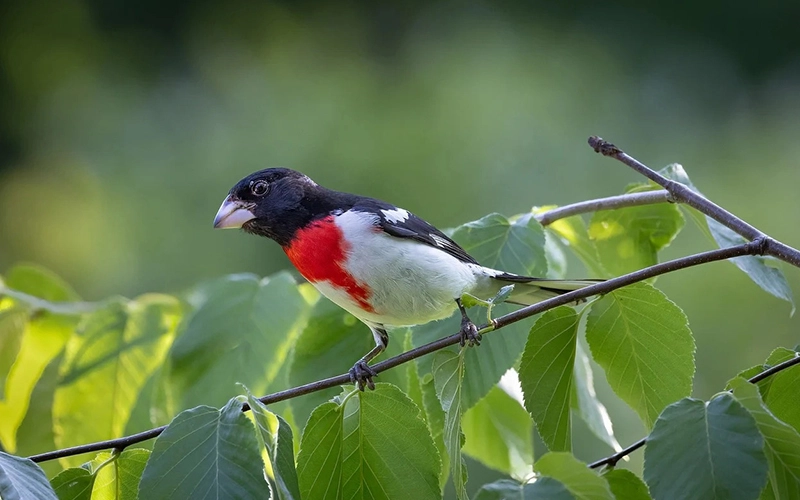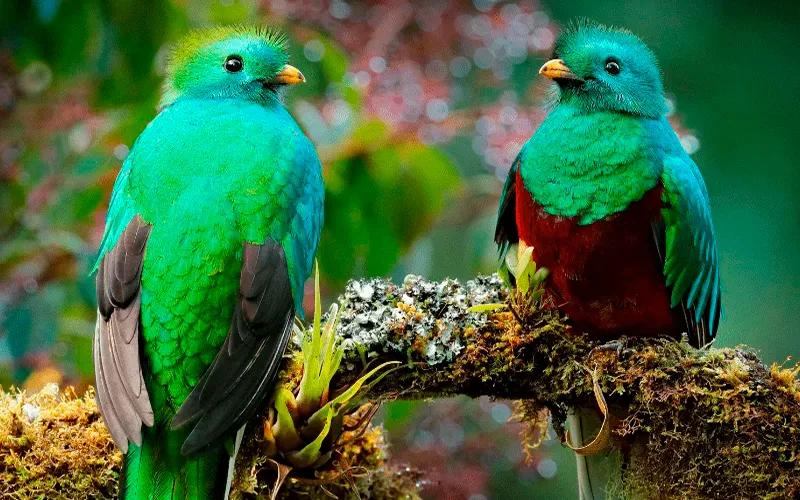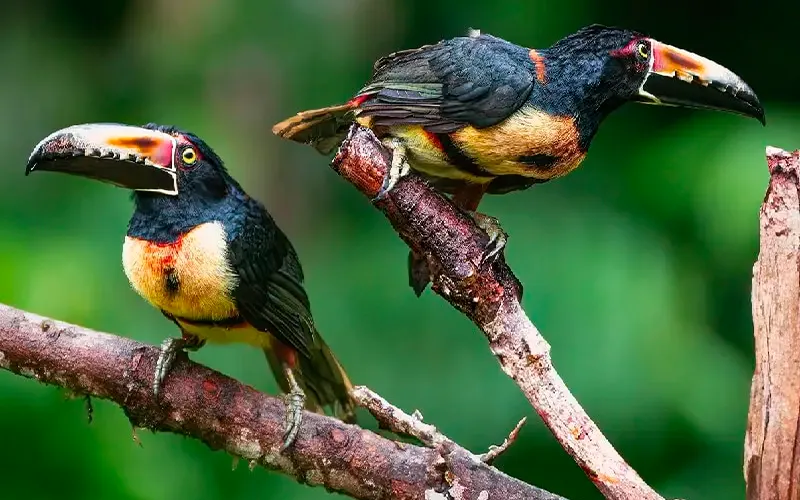Lovely Cotinga: Costa Rica’s Hidden Gem in the Forest
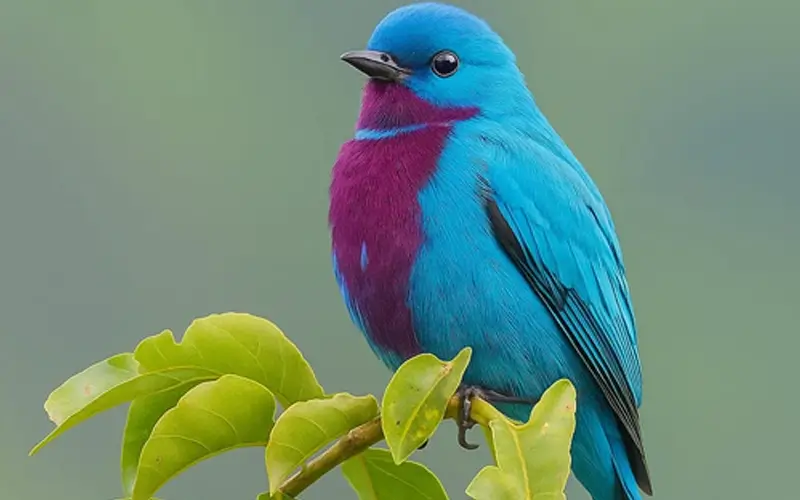
When you think of Costa Rica, what comes to mind? Lush jungles, dazzling biodiversity, and a symphony of exotic birds, right? Yet even among the most colorful tropical birds, one stands out like a floating jewel — the Lovely Cotinga.
Spotting a Lovely Cotinga feels almost magical. Picture a brilliant turquoise gem quietly gliding high in the trees. It’s a reminder that nature sometimes hides its most precious treasures in plain sight.
Costa Rica, with its thriving rainforests and deep commitment to conservation, is one of the best places on Earth to find this elusive bird. Particularly, the Tayutic Mountain Reserve offers a privileged window into the Lovely Cotinga’s world.
Let’s dive into the fascinating life of this spectacular species and discover why Costa Rica is truly its ultimate haven.
What Is the Lovely Cotinga?
The Lovely Cotinga (Cotinga amabilis) belongs to the Cotingidae family, a group renowned for its extravagantly colored members. Native to Central America, this bird is primarily found in southern Mexico, Guatemala, Honduras, Nicaragua, and of course, Costa Rica.
Unlike many birds that rely on song to announce their presence, the Lovely Cotinga is a master of stealth. It is relatively silent and prefers to perch quietly in the forest canopy, almost as if it knows that its stunning appearance is enough to captivate any lucky observer.
The species thrives in humid, tropical forests and heavily wooded areas. These dense ecosystems offer the perfect shelter and a plentiful supply of fruit, the Cotinga’s main food source.
A Living Jewel: Physical Description and Colors
Imagine looking up into the dense green canopy and spotting what seems to be a turquoise gem hovering among the leaves. That’s the Lovely Cotinga for you.
The male is almost impossibly vivid: bright turquoise-blue plumage with a soft, velvety texture that seems to glow under the tropical sun. In the right light, it looks surreal — a creature too beautiful to be real.
In contrast, the female wears more muted tones: a mix of browns and pale blues, perfect for blending into the forest when nesting or feeding.
During my own encounters, the male’s iridescence was so striking that it seemed to cast a soft glow through the leaves, almost like a piece of the sky had fallen into the forest.
It’s no wonder that birdwatchers from around the world dream of seeing one with their own eyes.

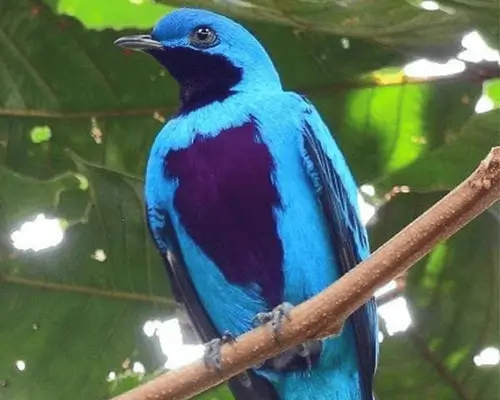
Where to Find the Lovely Cotinga: Habitat and Distribution
Although their range stretches across several Central American countries, Costa Rica offers some of the most reliable opportunities to observe the Lovely Cotinga.
Tayutic Mountain Reserve stands out as a prime location. Nestled in the lush Turrialba region, this private reserve protects a swath of pristine cloud forest — the perfect habitat for our turquoise marvel.
Here, amid giant trees and flowering canopies, the Lovely Cotinga can often be seen flitting from branch to branch or resting motionless against the sky. Other good spots include Costa Rica’s Caribbean lowlands and mid-elevation forests, but sightings are always a reward for the patient and attentive.
What makes Tayutic Mountain Reserve special is its tranquility. Unlike crowded tourist spots, it offers a serene environment where birdwatchers can truly connect with nature — and maybe, just maybe, catch that unforgettable glimpse of a Lovely Cotinga.
Behavior and Diet: The Quiet Life of a Forest Bird
Unlike noisy parrots or flamboyant toucans, the Lovely Cotinga is remarkably silent. This makes it harder to detect but adds to the sense of wonder when you finally find one.
Their daily life revolves around fruit, especially small, soft varieties abundant in tropical forests. They often remain still for long periods, perched high in the canopy where they blend seamlessly into their leafy surroundings.
During my time observing them, what struck me was their patience. Unlike other birds that hop around energetically, the Lovely Cotinga moves with a calm grace, surveying its surroundings as if savoring every moment.
Their calm, almost meditative behavior makes every sighting a peaceful, magical experience.
Why Is It So Hard to Spot a Lovely Cotinga?
For a bird that looks like it was dipped in pure sapphire, the Lovely Cotinga is astonishingly elusive. Several factors contribute to this:
Height: They prefer the very tops of tall trees.
Silence: They rarely sing or call, reducing the chances of auditory detection.
Stillness: They can remain perched and motionless for hours.
Many times, I found myself scanning endless green canopies, wondering if I had missed one hiding in plain sight. It’s part of what makes seeing a Lovely Cotinga so rewarding — you know you’ve witnessed something truly special.
Birdwatching in Tayutic Mountain Reserve enhances your odds because the reserve’s unique structure allows better vantage points into the higher forest layers.
Conservation Status: Threats to This Tropical Treasure
While the Lovely Cotinga is currently listed as “Least Concern” by the IUCN, it faces growing threats, mainly due to habitat loss.
Deforestation, driven by agriculture and urban expansion, fragments the dense forests these birds rely on for food and shelter. Loss of continuous canopy corridors makes it harder for Cotingas to find sufficient resources and safe nesting areas.
Places like Tayutic Mountain Reserve play a vital role in conservation by safeguarding critical habitats. Every protected hectare increases the chances that future generations will still marvel at the shimmering flight of the Lovely Cotinga.
Observing one in its natural habitat, as I was lucky enough to do, reminds us of the urgent need to defend these irreplaceable jewels of the forest.
The Importance of Protecting Forest Biodiversity
Protecting birds like the Lovely Cotinga isn’t just about saving one species — it’s about maintaining the health and vibrancy of entire ecosystems.
The rainforests of Costa Rica are ecological powerhouses that regulate climate, store carbon, and house countless species of plants, animals, and microorganisms.
By supporting reserves like Tayutic, we are investing in the future of biodiversity, ensuring that magical encounters like spotting a Lovely Cotinga remain possible.
During my visit, realizing how interconnected everything was — from the tiniest insects to the grand trees towering above — gave me a deep respect for conservation efforts.
These forests are not just beautiful; they are essential for life itself.
Why the Lovely Cotinga Captures Our Hearts
Seeing a Lovely Cotinga in the wild is like finding a living treasure. Their brilliant colors, quiet grace, and elusive nature stir something deep within the human soul — a mix of wonder, gratitude, and awe.
Costa Rica, with its unyielding commitment to conservation and natural beauty, offers one of the best chances in the world to experience this marvel.
And among Costa Rica’s hidden gems, Tayutic Mountain Reserve shines brightly, offering a rare and intimate glimpse into the secret life of the Lovely Cotinga.
Some jewels, like this vibrant blue bird, deserve to be protected, cherished, and celebrated — forever.






